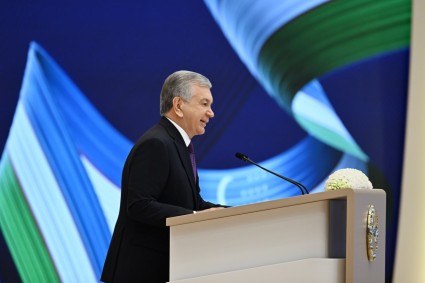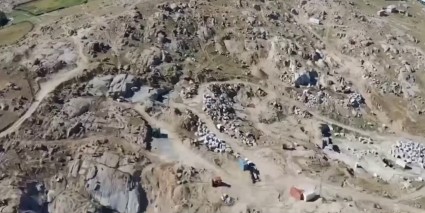The war against Ukraine and sanctions on Russia are hitting economies around the globe, with emerging market and developing countries in the Europe and Central Asia region expected to bear the brunt, says the World Bank’s latest Economic Update for the region, released today.
The Europe and Central Asia region’s economy is now forecast to shrink by 4.1 percent this year, compared with the pre-war forecast of 3 percent growth, as the economic shocks from the war compound the ongoing impacts of the COVID-19 pandemic. This would be the second contraction in as many years, and twice as large as the pandemic-induced contraction in 2020.
Growth in Central Asia is forecast to more than halve from 5.1 percent in 2021 to 2 percent in 2022 due to tight economic linkages with the Russian economy. Although higher global commodity prices should help to buoy activity and fiscal balances in Kazakhstan and Uzbekistan. Their economies are expected to demonstrate growth at the level of 1.8 percent and 3.6 percent respectively. At the same time, growth in Tajikistan and the Kyrgyz Republic, which are the most dependent on remittances from Russia, is expected to fall to -1.8 percent and -5 percent respectively in 2022.
Ukraine’s economy is expected to shrink by an estimated 45.1 percent this year, although the magnitude of the contraction will depend on the duration and intensity of the war. Hit by unprecedented sanctions, Russia’s economy has already plunged into a deep recession with output projected to contract by 11.2 percent in 2022.
“The magnitude of the humanitarian crisis unleashed by the war is staggering. The Russian invasion is delivering a massive blow to Ukraine’s economy and it has inflicted enormous damage to infrastructure,” said Anna Bjerde, World Bank Vice President for the Europe and Central Asia region. “Ukraine needs massive financial support immediately as it struggles to keep its economy going and the government running to support Ukrainian citizens who are suffering and coping with an extreme situation.”
The war has added to mounting concerns of a sharp global slowdown, surging inflation and debt, and a spike in poverty levels. The economic impact has reverberated through multiple channels, including commodity and financial markets, trade and migration links and adverse impact on confidence.
The war is also hitting hard the emerging and developing economies of Europe and Central Asia, a region that was already heading for an economic slowdown this year from the ongoing effects of the pandemic. In addition to Russia and Ukraine, Belarus, Kyrgyz Republic, Moldova and Tajikistan are projected to fall into recession this year, while growth projections have been downgraded in all economies due to spillovers from the war, weaker-than-expected growth in the euro area, and commodity, trade and financing shocks.
Russia and Ukraine account for about 40 percent of wheat imports in the region and about 75 percent or more in Central Asia and the South Caucasus. Russia is also a major export destination for many countries, while remittances from Russia are close to 30 percent of GDP in some Central Asian economies (Kyrgyz Republic, Tajikistan).
“The Ukraine war and the pandemic have once again shown that crises can cause widespread economic damage and set back years of per capita income and development gains,” said Asli Demirgüç-Kunt, World Bank Chief Economist for Europe and Central Asia. “Governments in the region should fortify their macroeconomic buffers and credibility of their policies to contain risks and deal with potential fragmentation of trade and investment channels; strengthen their social safety nets to protect the most vulnerable, including the refugees; and not lose focus on improving energy efficiency to ensure a sustainable future.”
The deep humanitarian crisis sparked by the war has been the most pronounced of the initial global shockwaves and will likely be among the most enduring legacies of the conflict. The wave of refugees from Ukraine to neighboring countries is anticipated to dwarf previous crises. As a result, support to host countries and refugee communities will be critical, and the World Bank is preparing operational support programs to neighboring countries to meet the increased financing needs from the refugee flows.
The war-triggered spike in global oil prices also serves to underscore the need for energy security by boosting energy supply from renewable sources and stepping up the design and implementation of large-scale energy efficiency measures.
Outlook for Uzbekistan
In Uzbekistan, Russia’s invasion of Ukraine will slow growth to 3.6 percent in 2022, compared to pre-crisis estimates of about 6 percent. An anticipated 50 percent fall in remittances (from a weaker ruble and the collapse of Russia’s economy) and higher oil, wheat, and cooking oil prices will sharply lower private consumption. Investment growth is also expected to slow given the heavy reliance on Russian capital imports and bank financing for public and private investment projects.
Although Uzbekistan will benefit from high global commodity prices (gold, copper, and natural gas), an estimated 6 percent of GDP fall in remittances will widen the current account deficit to 10 percent of GDP in 2022. With foreign investments from Russia expected to fall, FDI inflows will be subdued in 2022 and take time to recover.
As a result, the higher current account deficit is expected to be financed by new public debt and the use of reserves. Higher revenues from commodity exports and privatization receipts and slower public investment spending are likely to offset higher social spending to support remittance-dependent households and prevent an anticipated sharp rise in poverty levels from falling remittances and the return of potentially large numbers of displaced migrant workers.
As a result, the overall fiscal deficit is expected to fall to 4 percent of GDP in 2022. An anticipated fiscal consolidation by 2023 is now likely to be delayed. The government is expected to continue adhering to its overall debt limits, and public debt is expected to peak at 42 percent of GDP in 2022-23 and stabilize at about 40 percent of GDP by end-2024.
These projections remain subject to significant further downside revisions depending on the duration of sanctions on Russia, potential global financial spillovers from US interest rate changes, further COVID-19 waves, and the impact of trade and logistics disruptions to Uzbekistan’s supply chains.












